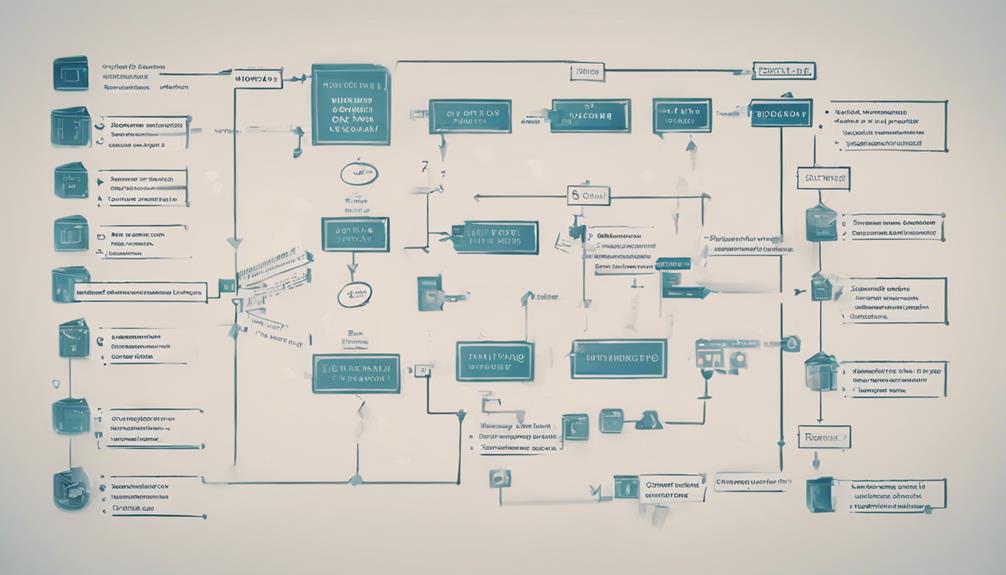To outsource your order processing services, you must navigate various crucial steps to ensure a successful partnership. From evaluating your business needs to selecting the right provider and negotiating a solid contract, each phase requires careful consideration and strategic planning. But what happens once the services are transitioned, and the provider is onboarded? That’s where the real challenge lies. Stay tuned to uncover essential tips on how to effectively monitor and optimize your outsourced order processing services for long-term success.
Evaluate Business Needs
Assess your company’s current order processing requirements to determine the extent of outsourcing needed for optimal efficiency. Start by analyzing requirements such as order volume, complexity, and seasonal fluctuations. Identify priorities within your order processing workflow, such as speed, accuracy, and customer satisfaction. Understanding these key factors will help you assess which aspects of order processing are best suited for outsourcing.
Consider the scalability of your business and how outsourcing can support growth without compromising quality. Evaluate the cost-effectiveness of outsourcing compared to in-house processing, taking into account factors like labor costs, technology investments, and training expenses. By analyzing your current order processing needs and priorities, you can make informed decisions about which tasks to outsource and which to keep in-house to streamline operations and improve overall efficiency.
Research Potential Providers
When researching potential providers for outsourcing order processing services, it is crucial to focus on finding partners that align with your company’s specific needs and goals. Start by comparing prices offered by different service providers. Look for a balance between cost and quality to ensure you are getting the best value for your investment.
Additionally, assessing the experience of potential providers is key. Check how long they have been in the industry, the types of clients they have worked with, and any relevant case studies or testimonials that showcase their expertise. An experienced provider is more likely to handle your order processing efficiently and effectively.
Consider the technology and tools each provider uses. Ensure they have systems in place that can integrate with your current processes seamlessly. Communication is also vital, so evaluate their responsiveness and clarity in addressing your queries.
Select Provider
To select a provider for outsourcing order processing services, begin by evaluating their capabilities and compatibility with your company’s requirements. Start by conducting a thorough pricing comparison among potential providers. Look beyond the initial costs and consider long-term pricing structures to ensure you are getting the best value for your money. Additionally, assess the service quality offered by each provider. Look into their track record, customer reviews, and quality assurance processes to ensure that they can meet your standards.
When comparing pricing, consider not only the base fees but also any additional charges that may apply. Ensure that the provider’s pricing aligns with your budget and offers transparency regarding costs. On the other hand, evaluate service quality by requesting samples or demonstrations of their order processing services. This will give you a firsthand look at how efficient and accurate their processes are. Ultimately, selecting a provider that offers a balance of competitive pricing and high service quality will set you up for a successful outsourcing partnership.
Negotiate Contract
Initiate negotiations with the selected provider for outsourcing order processing services by outlining your contractual terms and expectations clearly. When discussing the pricing structure, ensure it aligns with your budget while reflecting the quality of service you expect. Service level agreements are crucial to establish the performance standards the provider must meet. Define metrics like order processing time, accuracy rates, and customer satisfaction levels in this agreement.
In terms of contract terms, pay attention to details such as the duration of the contract, termination clauses, and renewal options. Legal considerations are vital to protect your interests, so include clauses regarding data security, confidentiality, and compliance with regulations. Make sure the contract is comprehensive, leaving no room for ambiguity that could lead to disputes in the future.
Throughout negotiations, maintain a strategic approach by leveraging your requirements to secure favorable terms. Be clear and assertive about your expectations to establish a mutually beneficial partnership with the outsourcing provider.
Transition Services
Consider establishing a structured plan for the seamless transition of order processing services to the selected outsourcing provider. Transition planning is crucial to ensure a smooth handover of responsibilities. Begin by outlining a detailed timeline that includes key milestones and tasks for both your team and the outsourcing provider. Conduct a thorough cost analysis to understand the financial implications of the transition process. This analysis should cover not only the direct costs of outsourcing but also any potential savings or efficiencies that may result from the new arrangement.
During the transition phase, maintain open communication with the outsourcing provider to address any challenges promptly. Regularly assess progress against the established timeline and budget to make necessary adjustments. Allocate sufficient resources to support the transition, including dedicated staff members who can oversee the process and address any issues that may arise. By carefully planning and executing the transition of order processing services, you can set the foundation for a successful outsourcing partnership.
Monitor Provider Performance
Establish a robust system for monitoring the performance of your outsourcing provider to ensure alignment with agreed-upon service levels and expectations. Implementing performance tracking and benchmarking mechanisms allows you to objectively evaluate your provider’s efficiency and quality. This involves setting specific key performance indicators (KPIs) related to order processing speed, accuracy, and customer satisfaction, which serve as benchmarks for assessing their performance.
Additionally, integrating a quality assurance process into your monitoring system enables you to maintain the desired service standards consistently. Regularly providing feedback to your outsourcing partner creates a feedback loop for continuous improvement and corrective actions if deviations occur. By actively monitoring your provider’s performance, you can address any issues promptly, ensuring that the outsourcing arrangement remains beneficial for your business. Remember, effective monitoring not only safeguards your interests but also fosters a collaborative and productive relationship with your outsourcing provider.
Frequently Asked Questions
How Do Outsourced Order Processing Services Ensure Data Security?
Outsourced order processing services ensure data security by utilizing advanced data encryption methods to protect sensitive information. Secure servers are employed to safeguard data from unauthorized access, ensuring the confidentiality and integrity of your data.
Can I Customize the Order Processing Services to Fit My Business?
Want to tailor your order processing services to your business needs? With customization options and service flexibility, outsourced providers can adapt their offerings to suit your unique requirements, ensuring a personalized and efficient solution.
What Happens if There Are Errors in the Order Processing?
If errors occur in order processing, swift resolution is crucial for customer satisfaction and business operations. Address issues promptly, communicate transparently, and implement process improvements to minimize future errors, ensuring a positive impact on your business.
Are There Any Hidden Fees or Additional Costs to Be Aware Of?
You should always prioritize cost transparency when considering outsourcing. Make sure to inquire about any additional charges or hidden fees. Understanding the full scope of costs upfront will help you avoid surprises down the line.
How Quickly Can the Outsourced Provider Scale Their Services if Needed?
When considering outsourcing, ensure the provider’s scalability options align with your needs. Look for efficiency measures in their processes, resource availability, and service level commitments. Understanding these elements prevents bottlenecks and supports growth.



